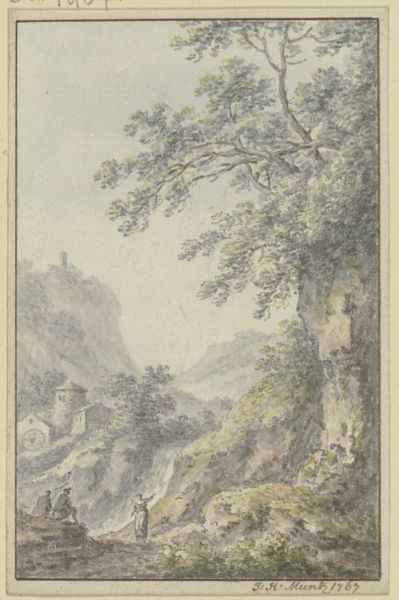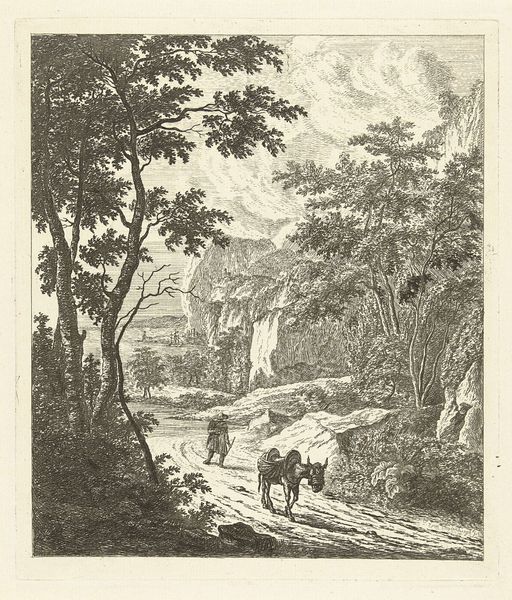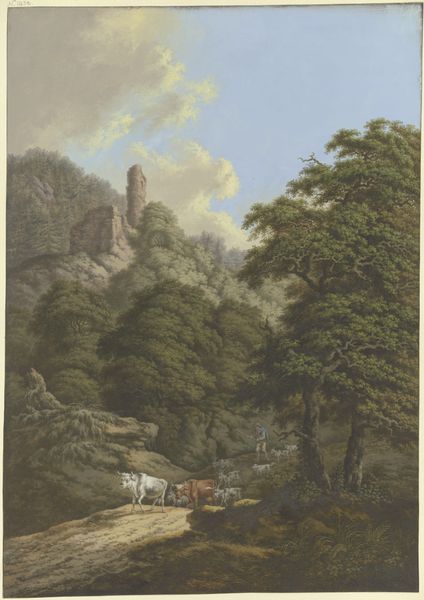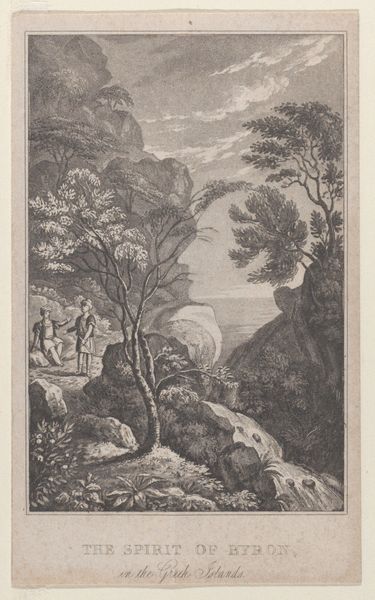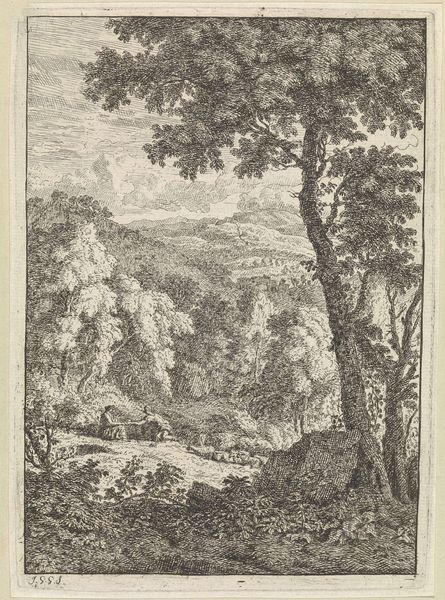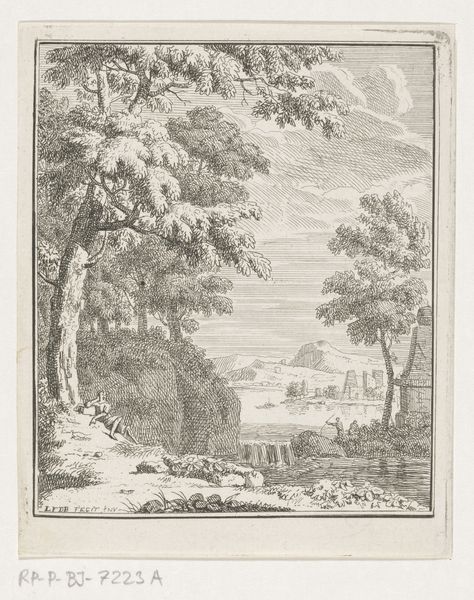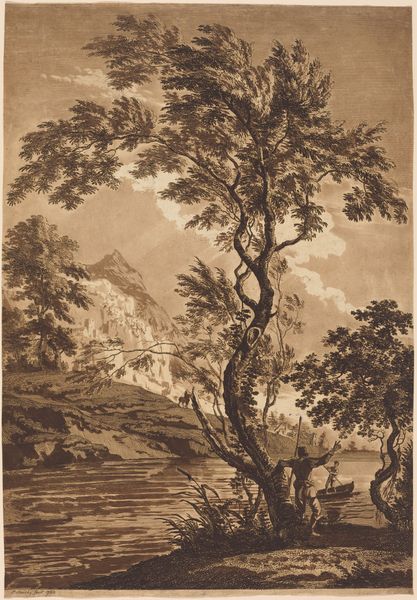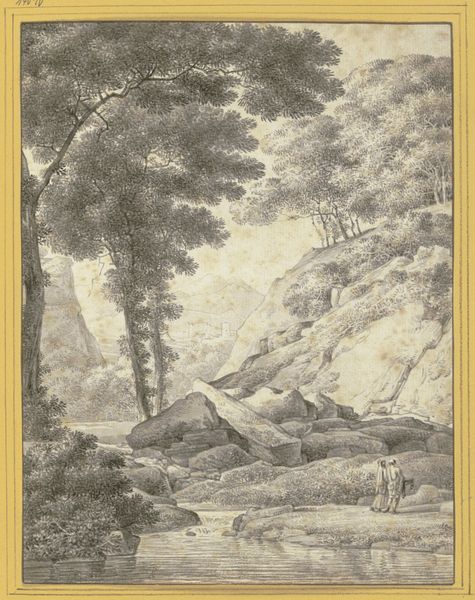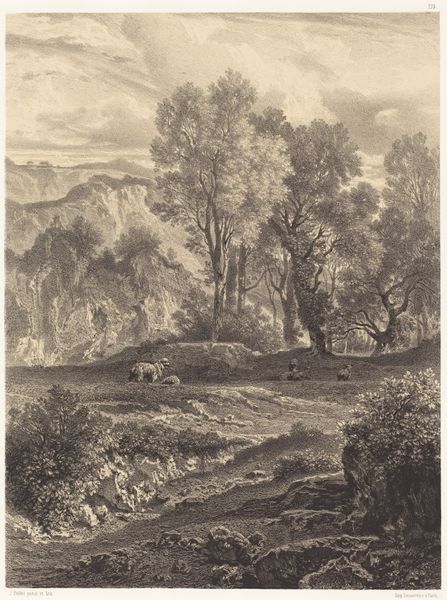
watercolor
#
dutch-golden-age
#
landscape
#
watercolor
#
coloured pencil
#
genre-painting
#
watercolor
Dimensions: height 99 mm, width 66 mm
Copyright: Rijks Museum: Open Domain
Editor: This is Jurriaan Andriessen’s "Landschap met vee," dating from 1752-1819, and created with watercolor. It’s a calming scene. The layers in the painting almost make the piece feel staged, each one with varying color palettes and details. What do you see in this work? Curator: Structurally, the piece exhibits a fascinating manipulation of depth through color. Note the gradient from the vibrant greens and browns in the foreground to the muted blues and greys of the distant mountains. This not only creates spatial recession but also segmentizes the composition. Consider also the dominant verticality established by the trees, balanced against the horizontal sweep of the landscape. Do you observe how the light delineates the volumes? Editor: Yes, it’s clear in how it bounces off the leaves and defines the shapes of the cows in the lower register. It’s as though each plane has its own individual light source. Curator: Precisely! The artist consciously constructs the composition through contrasts of light and shadow. The meticulous rendering of the trees’ branching structures acts as a filigree, drawing our eye into the pictorial space. Note the subtle semiotic play: cows grazing peacefully against the backdrop of a fortified building on the distant hill. Does this contrast trigger further inquiry into the narrative framework? Editor: It does! The pastoral imagery combined with hints of societal structures is compelling. I suppose I didn't initially see past the beauty of the natural forms and how they are captured so well. Curator: A very keen insight. Close analysis unveils layers beyond immediate appeal, transforming our comprehension of its construction. Editor: Indeed, the dialogue between form and representation seems much more deliberate now, revealing new ways to think about watercolor and landscape art.
Comments
No comments
Be the first to comment and join the conversation on the ultimate creative platform.

